Dec. 12 to Dec. 18
Lien Jih-ching (連日清) had many monikers during his life, but his daughter’s favorite is “Mosquito Man” (蚊人), which sounds similar to the Mandarin word for “literati.”
“He studied mosquitoes at work, cared for them after he got home and his hobby was collecting specimens,” Lien Hsiu-mei (連秀美) writes in her 2007 biography of her father. “Nobody understands mosquitoes better than he does … He even knows what they’re thinking.”
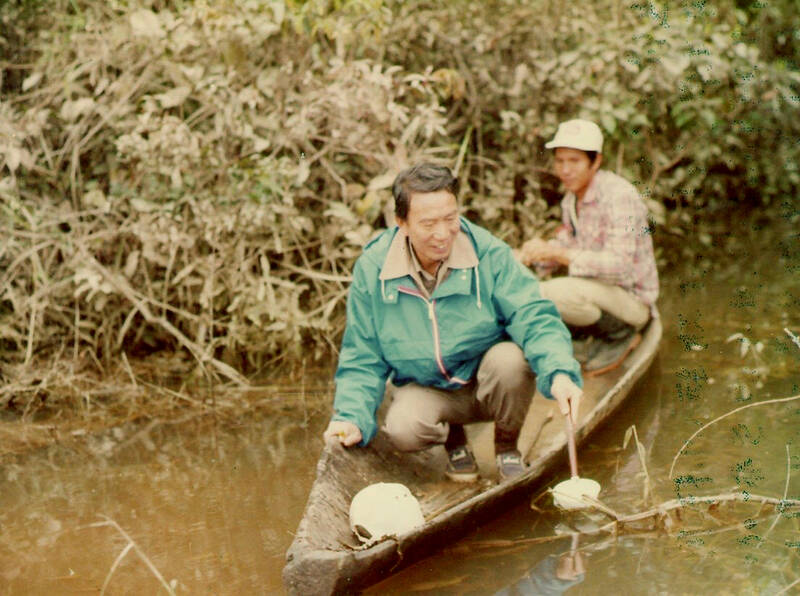
Photo courtesy of Lien Jih-ching
Despite contracting an excruciating bout of dengue fever during his first mosquito collecting expedition at the age of 15, Lien eventually made it his life’s work to study them and help eradicate the myriad diseases that ravaged Taiwan at that time.
He classified more than 140 species of mosquitoes in Taiwan, personally naming 29 new local and two foreign types. He traveled extensively in less than glamorous conditions on research and aid trips, and many of his tales include being attacked by swarms of insects while trying to capture specimens in infested areas. In 1997, the government sent the 80-year-old on the first of many trips to Sao Tome and Principe to help Taiwan’s newest (and now former) ally deal with malaria in what was called “mosquito diplomacy.”
It was an unlikely career for Lien, who grew up in a poor family with 14 siblings. At 15, he left school and began working as a temporary assistant at Taihoku Imperial University’s Department of Tropical Medicine. His supervisor Nanzaburo Oomori saw his potential and encouraged him to pursue a career in the field, but with World War II and his family desperately needing money, he explored other options before returning to mosquitoes in 1955.
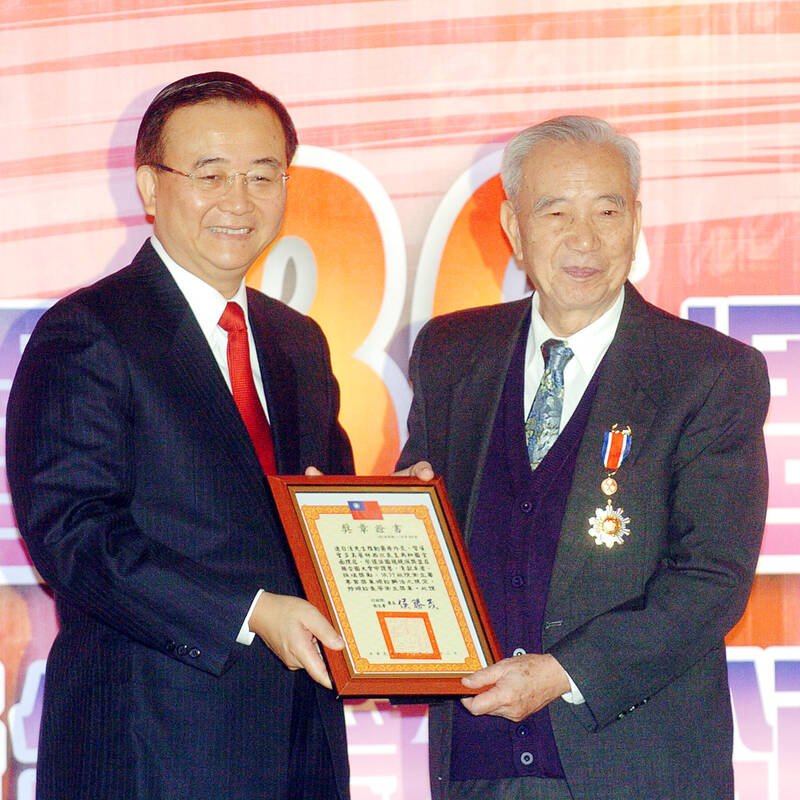
Photo: Tsung Tsang-chin, Taipei Times
“Most people like studying bigger, prettier bugs such as butterflies, but I like the smaller ones,” he once said.
FORTUITOUS BEGINNINGS
Lien was born in Taipei on Dec. 12, 1927. The Lien clan was once prosperous but fell on hard times after losing five members during a plague epidemic; his father ended up working at a factory that once belonged to the family.
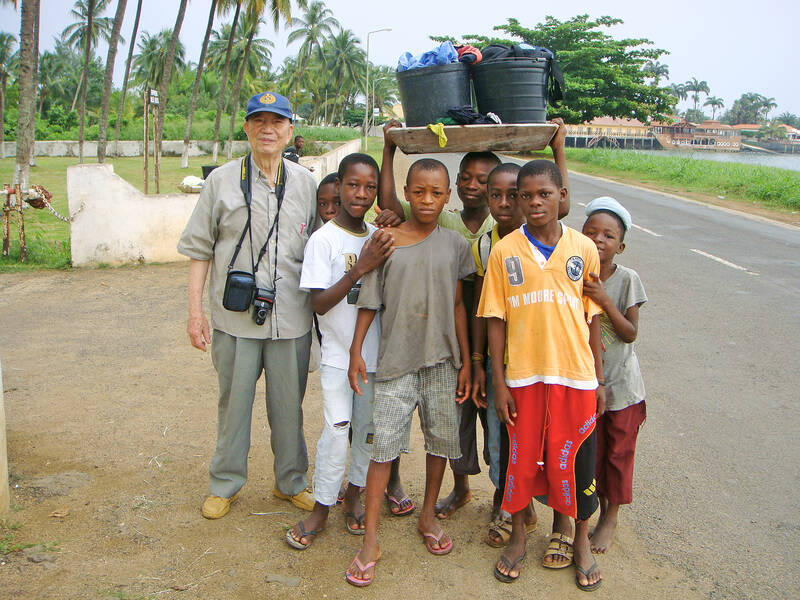
Photo: Tsung Tsang-chin, Taipei Times
After finishing his second year of secondary school, Lien knew he needed to start helping out with the family’s finances. Any job would do, he thought. He was a bright student, so his school recommended him as a temporary assistant at Taihoku Imperial University’s Department of Tropical Medicine.
At the time, four major mosquito-carrying diseases were common in Taiwan: malaria, elephantiasis, dengue fever and Japanese encephalitis. The department had established a solid foundation for the study of mosquitoes, classifying more than 40 species at that point.
The main task at hand was malaria since it was difficult to import medicine due to World War II, and the lab was trying to create a cure by experimenting on canaries. Lien was charged with tending to the birds, drawing their blood and preparing and cleaning glass slides. He was moved to the entomology lab three months later, where he met his life-long mentor Oomori.
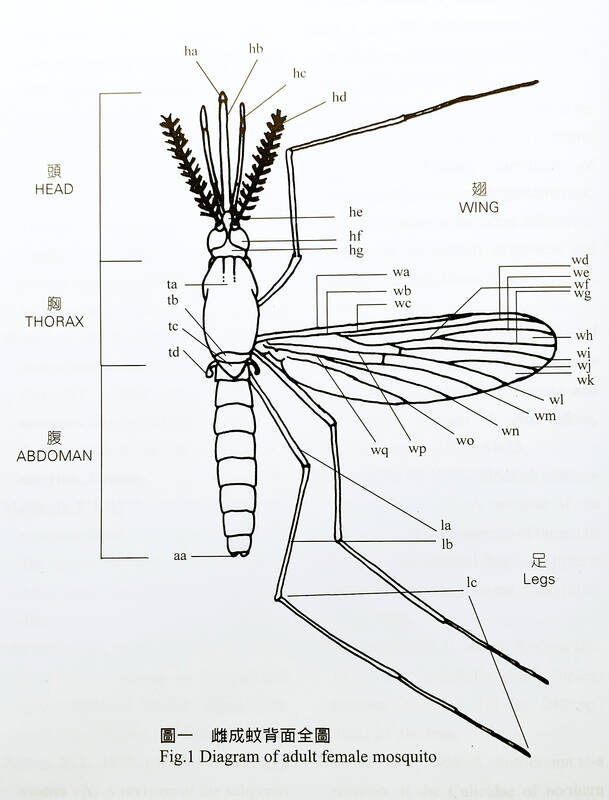
Photo courtesy of National Central Library
On Lien’s first day of work, Oomori asked him to learn to type in English. Lien didn’t even know the entire alphabet then, but he mastered it in two weeks and excelled at it. Impressed, Oomori asked Lien why he dropped out of school. After hearing his story, Oomori personally went to Seien School (today’s Cheng Yuan Senior High School, 成淵高中) to convince them to accept Lien as a night-time student despite the application deadline having passed.
Lien’s father was furious that he spent part of his paycheck on registration fees, and Lien’s desire to study would be a major source of conflict between the two over the years. Oomori told him to stop typing whenever they had visitors and listen to the conversation, and soon he realized that he was fascinated by insects.
FIGHTING MALARIA
In the summer of 1942, Taiwan experienced its most serious dengue fever epidemic, which afflicted about 5 million people. It was caused by troops coming in and out of the country from Southeast Asia.
Oomori brought Lien with him to investigate in the south, and despite having full protection, Lien still caught the disease. He was in severe pain for more than a week, and was still notably weakened a month later.
However, this experience made him realize how important the department’s research was. He continued to impress his managers, who promoted him to lab technician. In March 1945, he was drafted into the army’s disease prevention brigade and helped with a study on whether the toxic thickfruit millettia plant could kill mosquito larvae.
He returned to the lab after the war. With most of the Japanese gone, he realized how much Taiwan had relied on their experts.
“If we don’t know what kind of mosquitoes and insects exist in our own country and cannot solve the problems that they cause, that’s just ridiculous,” he once said. “We can’t leave the job to foreigners. If nobody wants to do it, I’ll do it and establish the groundwork.”
New department head Hung Shih-lu (洪式閭) saw the unpublished thickfruit millettia study, which listed Lien as co-author, and asked him to publish it in Chinese. Lien replied that his Chinese was poor, so Hung dared him to do it in English — and in 1948, at the age of 21, Lien published his first academic paper in Chinese Review of Tropical Medicine.
Unfortunately, the government was running out of funds due to the worsening Chinese Civil War, and had trouble paying the lab’s staff. Lien left for other opportunities and was later admitted to National Taiwan Normal University’s English Department, which sparked another massive conflict at home.
Having finished his degree, completed his military service and married, Lien planned on becoming a full-time English teacher when the Taiwan Malaria Research Institute reached out to him in 1955. At the time, more than 1.2 million people in Taiwan contracted malaria per year, and the government sought to eradicate the disease with American support.
The staff traveled the nation monitoring mosquito activity and collecting specimens. Lien recalls carrying large spray cans of DDT into the mountains to disinfect people’s houses, and visiting patients to make sure they took their medicine.
By 1965, the WHO declared that malaria was eradicated in Taiwan.
MOSQUITO DIPLOMACY
Lien traveled abroad for the first time in 1958, heading to the UK to study with support from the institute and WHO. In 1964, he spent four months in Malaysia studying malaria in monkeys, and also traveled to Orchid Island where he almost died twice from contracting scrub typhus. He also researched malaria in flying squirrels, and co-discovered a new parasite in 1968.
Lien’s goal was to exhaustively study Taiwan’s mosquitoes and related insects and classify them. His 1968 PhD dissertation included 27 new species, but he didn’t find his next one, culiseta taiwanica, until 1997 in the mountains of Hsinchu’s Jianshi Township (尖石) as a consultant for the National Defense Medical Center (國防醫學院).
After the eradication of malaria, Lien joined the US Naval Medical Research Unit 2 in Taipei, heading the entomology department until the US broke ties with Taiwan in 1979.
The US Navy offered to help its Taiwanese employees emigrate to the US, but Lien made the difficult decision to stay as he couldn’t let go of his life’s work and passion for Taiwan’s mosquitoes.
Lien’s first “mosquito diplomacy” trip was to then-ally Bolivia. However, the country ditched Taiwan for China in 1985, leading to an abrupt end to the program that was just getting off the ground.
Lien officially retired in 1993, but besides a two-month break traveling with his wife, he remained busy and continued to travel the world on behalf of the government. He passed away in February this year.
Taiwan in Time, a column about Taiwan’s history that is published every Sunday, spotlights important or interesting events around the nation that either have anniversaries this week or are tied to current events.

Water management is one of the most powerful forces shaping modern Taiwan’s landscapes and politics. Many of Taiwan’s township and county boundaries are defined by watersheds. The current course of the mighty Jhuoshuei River (濁水溪) was largely established by Japanese embankment building during the 1918-1923 period. Taoyuan is dotted with ponds constructed by settlers from China during the Qing period. Countless local civic actions have been driven by opposition to water projects. Last week something like 2,600mm of rain fell on southern Taiwan in seven days, peaking at over 2,800mm in Duona (多納) in Kaohsiung’s Maolin District (茂林), according to

It’s Aug. 8, Father’s Day in Taiwan. I asked a Chinese chatbot a simple question: “How is Father’s Day celebrated in Taiwan and China?” The answer was as ideological as it was unexpected. The AI said Taiwan is “a region” (地區) and “a province of China” (中國的省份). It then adopted the collective pronoun “we” to praise the holiday in the voice of the “Chinese government,” saying Father’s Day aligns with “core socialist values” of the “Chinese nation.” The chatbot was DeepSeek, the fastest growing app ever to reach 100 million users (in seven days!) and one of the world’s most advanced and
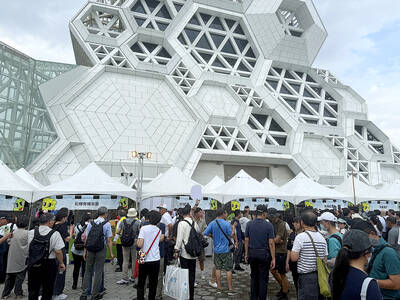
The latest edition of the Japan-Taiwan Fruit Festival took place in Kaohsiung on July 26 and 27. During the weekend, the dockside in front of the iconic Music Center was full of food stalls, and a stage welcomed performers. After the French-themed festival earlier in the summer, this is another example of Kaohsiung’s efforts to make the city more international. The event was originally initiated by the Japan-Taiwan Exchange Association in 2022. The goal was “to commemorate [the association’s] 50th anniversary and further strengthen the longstanding friendship between Japan and Taiwan,” says Kaohsiung Director-General of International Affairs Chang Yen-ching (張硯卿). “The first two editions
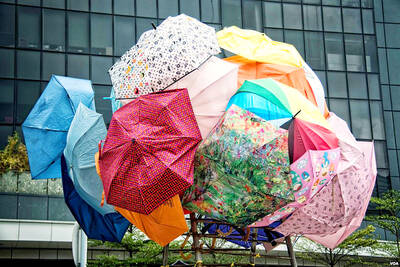
It was Christmas Eve 2024 and 19-year-old Chloe Cheung was lying in bed at home in Leeds when she found out the Chinese authorities had put a bounty on her head. As she scrolled through Instagram looking at festive songs, a stream of messages from old school friends started coming into her phone. Look at the news, they told her. Media outlets across east Asia were reporting that Cheung, who had just finished her A-levels, had been declared a threat to national security by officials in Hong Kong. There was an offer of HK$1m (NT$3.81 million) to anyone who could assist